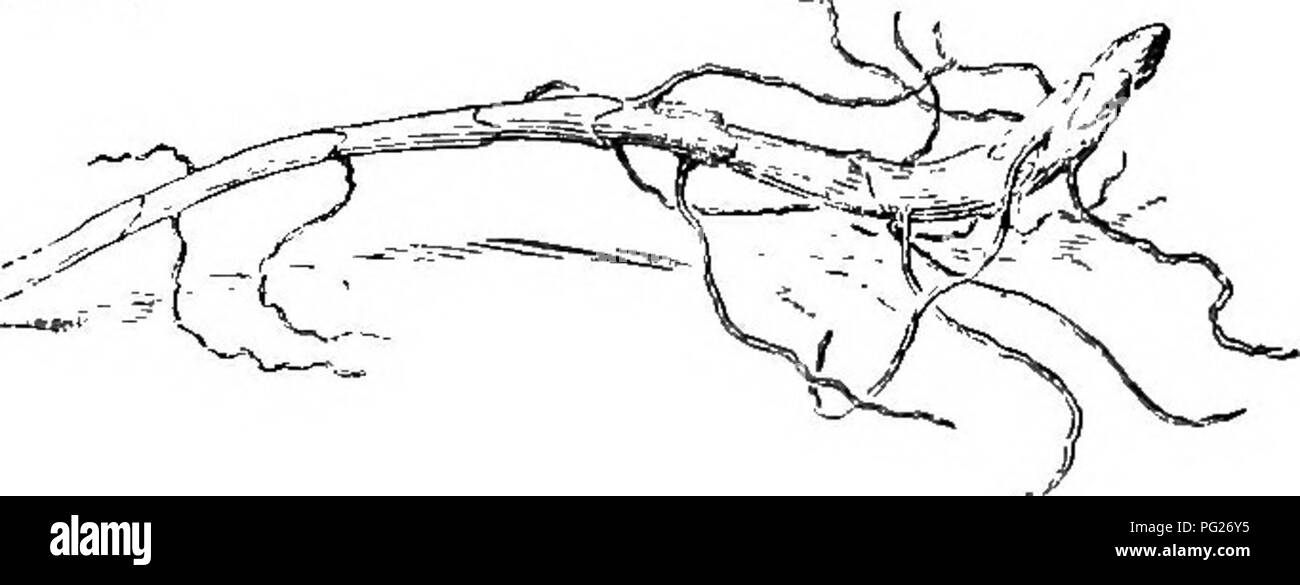. Beginners' botany. Botany. 52 BEGINNERS' BOTANY trees are always deliquescent, morning-glories are always trailing or climbing, strawberries are always creeping. We do not know why each plant has its own habit, but the habit is in some way associated with the plant's gene- alogy or with the way in which it has been obliged to live. The stem may be simple or branched. A simple stem usually grows from the terminal bud, and side branches either do not start, or, if they start, they soon perish. Mulleins (Fig. 53) are usually simple. So are palms. Branclicd stems may be of very different habit a

Image details
Contributor:
Central Historic Books / Alamy Stock PhotoImage ID:
PG26Y5File size:
7.1 MB (166.9 KB Compressed download)Releases:
Model - no | Property - noDo I need a release?Dimensions:
2560 x 976 px | 21.7 x 8.3 cm | 8.5 x 3.3 inches | 300dpiMore information:
This image is a public domain image, which means either that copyright has expired in the image or the copyright holder has waived their copyright. Alamy charges you a fee for access to the high resolution copy of the image.
This image could have imperfections as it’s either historical or reportage.
. Beginners' botany. Botany. 52 BEGINNERS' BOTANY trees are always deliquescent, morning-glories are always trailing or climbing, strawberries are always creeping. We do not know why each plant has its own habit, but the habit is in some way associated with the plant's gene- alogy or with the way in which it has been obliged to live. The stem may be simple or branched. A simple stem usually grows from the terminal bud, and side branches either do not start, or, if they start, they soon perish. Mulleins (Fig. 53) are usually simple. So are palms. Branclicd stems may be of very different habit and shape. Some stem systems are narrow and erect; these are said to be strict (Fig. 54). Others are diffuse, open, branchy, tzviggy. Nodes and Internodes.—The parts of the stem at which buds grow are called nodes or joints and the spaces be- tween the buds are internodes. The stem at nodes is usually enlarged, and the pith is usually interrupted. The distance between the nodes is influenced by the vigor of the plant: how.?. Fig. 59.— Rhizome or Rootstock. Stems vs. Roots. — Roots sometimes grow above ground (Chap. VII); so, also, stems sometimes grow underground, and they are then known as subterranean stems, rhizomes, or rootstocks (Fig. 59). Stems normally bear leaves and buds, and thereby are they distinguished from roots; usually, also, they contain a pith. The leaves, however, may be reduced to mere scales, and the buds beneath them may be scarcely visible.. Please note that these images are extracted from scanned page images that may have been digitally enhanced for readability - coloration and appearance of these illustrations may not perfectly resemble the original work.. Bailey, L. H. (Liberty Hyde), 1858-1954. New York, The Macmillan company